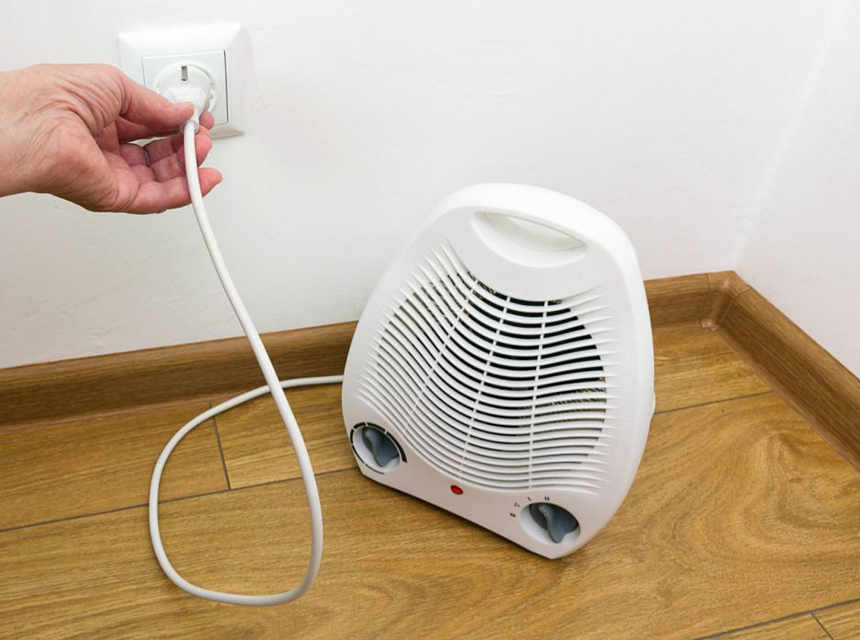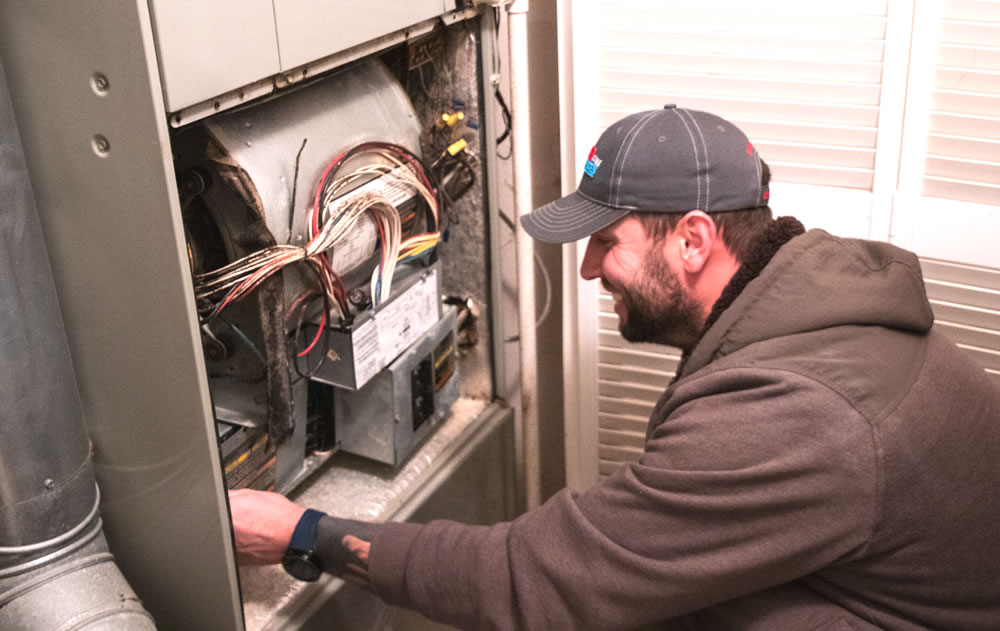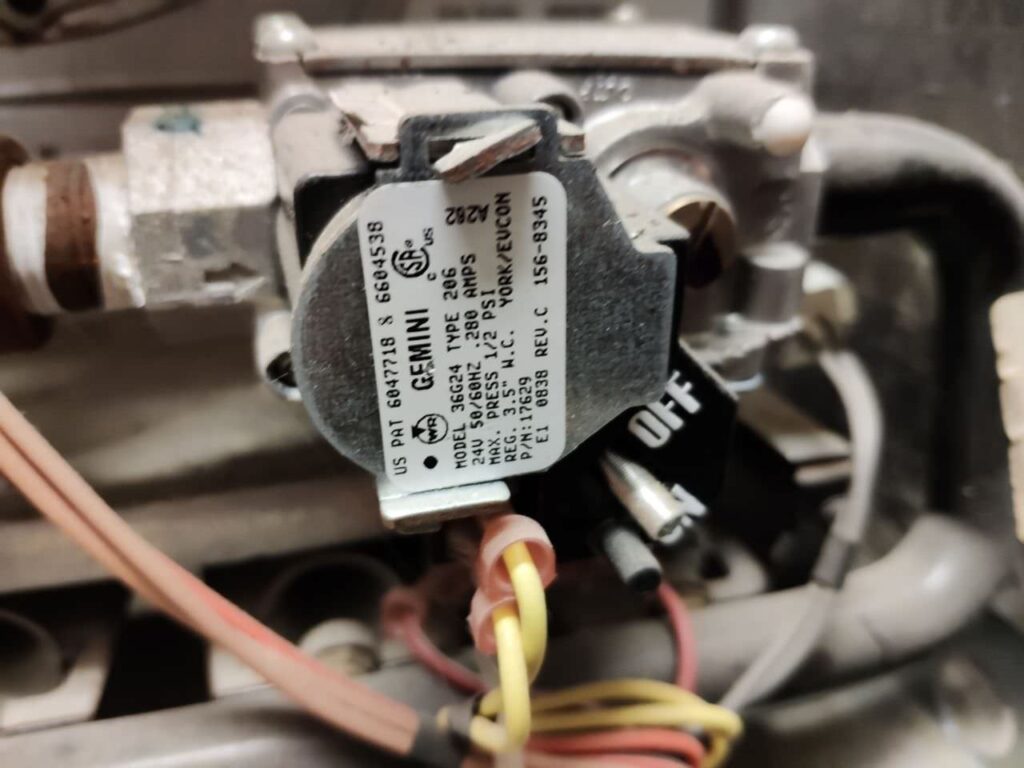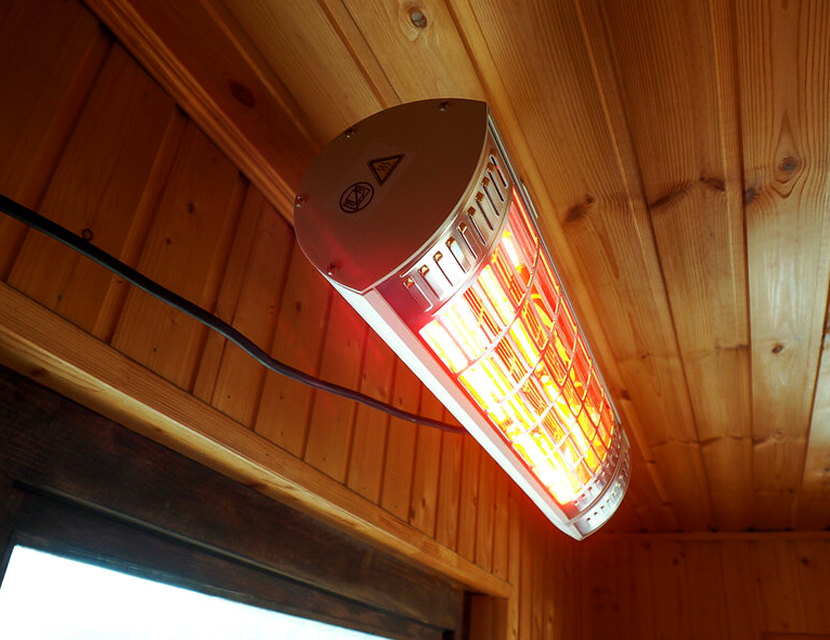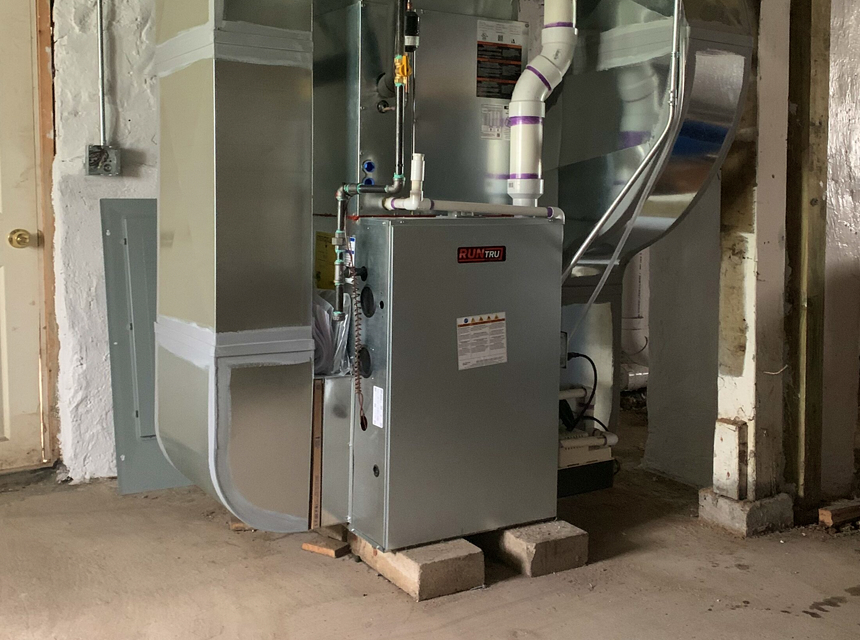

A garage is not only used to park the car but often also as a convenient place to store certain things, overwinter plants, as a workroom, and so on. The garage can be used for much more than simply parking the car. For most additional uses, however, the garage must have good thermal insulation.
Of course, this does not mean that the garage has to have the same temperature as your cozy living room. But it should be at least frost-proof so that you can use the garage fully and, above all, in a variety of ways.
Would you like to know how to insulate a garage? In the following guide, you will learn how to insulate a garage ceiling, garage door, and garage floor. We will also give you a few valuable guidelines regarding garage insulation costs.
Garages are available either as prefabricated garages made of different materials such as B steel, wood, or concrete built or individually designed and built. They can be free-standing, built on, or fully integrated into the house.
Insulation is often recommended, especially for heated garages and garages that are connected to the residential building. It helps to save heating costs in the cold season.
In the case of attached garages, the common wall in the living room is also prevented from cooling down. This prevents moisture from condensing on the wall and causing mold to form.
On the other hand, in the case of free-standing garages, it only makes sense in exceptional cases to insulate the gate, ceiling, or floor. If the ceiling of a detached garage is exposed to strong sunlight in the summer months or if frost forms in the garage in winter, you can still install insulation.
This also applies to the storage of vintage cars that are rarely driven, or to garages in which people are regularly present. You have to keep the room temperature as stable as possible here.
Additional insulation is not recommended for prefabricated garages, as it can lead to moisture build-up inside the garage. Therefore, mold and rust can form. This applies especially to steel garages. In this case, good ventilation is more important than good insulation.
With a few exceptions, most garages can be insulated. In the case of prefabricated steel garages, however, insulation is not recommended.
From a structural point of view, a steel garage cannot be properly insulated afterwards. It is almost impossible to fill the various constructions with form-fitting insulation.
If this is not successful, thermal bridges may arise and lead to moisture condensing between the garage wall and the insulating layer.
The result is rust on the load-bearing structure and mold on the insulation. This error is usually only noticed when the damage to the garage has already occurred. You can do without additional insulation for wooden garages.
A thermal insulator for a garage refers to a material having low thermal conductivity. It has a high resistance to heat flow and prevents heat from crossing the surface on which it is placed. In easier terms, insulation helps reduce heat leakage (to avoid cooling a room), but also its accumulation (to avoid increasing the temperature further).
It is important to reconcile the thermal resistance of insulating materials with the thermal transfer coefficient. The thermal transfer coefficient defines the amount of energy flow that passes through a medium.
You must first consider this coefficient to find the necessary thermal resistance before choosing the insulation. Note that the thickness of the insulation to be installed must be proportional to this thermal resistance.
The thermal phase shift is the last characteristic of insulators. This is the heat transfer slowing power that insulation materials have.
Thermal diffusivity is the term used to refer to the ability of a material to conduct heat. The higher its value, the less insulating the material. There are different types of insulation material for the garage Trusted Source 5 Types of Insulation for Your Garage Insulation for garages is generally the same as house insulation, with a few important differences in its use and installation. www.thespruce.com according to The Spruce. These include fiberglass, cellulose, rigid foam, and spray foam.
Mineral insulators are still the best in terms of thermal insulation today. This category of insulation comes from resources of mineral origin such as volcanic rocks, sand, or even recycled glass.
Insulators from this category are the most used in homes throughout the world. Commonly called “mineral wool”, this is suitable for all surface supports whether for roof insulation, wall insulation, floor insulation, at the level of thermal bridges for garage insulation, and window insulation.
The thermal conductivity of mineral insulators is among the lowest. In other words, mineral wools have high thermal resistance. This gives them a quality of thermal and acoustic insulation.
While fiberglass/glass wool and rock wool are the most popular, exfoliated perlites and vermiculite have the best insulating power. However, their high price makes them less accessible, hence the use of glass and rock wool.
Bio-based insulation is a category of materials derived from plant or animal biomass. They are characterized by their natural appearance making them the best option of ecological insulation, respectful of the environment.
Although this type of insulation is still below mineral insulation in terms of usage statistics, it is starting to see a huge boom.
There are many bio-based insulations, but the main ones are wood (or wood fiber), hemp, sheep’s wool, and cellulose wadding from paper.
Their particularity stems from their origin in recycling. Bio-based insulation has good thermal performance. However, to maximize their effectiveness, it is necessary to thicken the insulation well. (> 30 cm). Also, they remain relatively unknown in the market, making their price a little higher.
Synthetic insulators are materials obtained by polymerization. Constructed from plastic, the best known are expanded polystyrene, extruded polystyrene, polyethylene, polyurethane, and phenolic foam.
According to most reviews, the 3009 Garage Door Insulation Kit by Reach Barrier is one of the most reliable synthetic materials for garage insulation. It’s made of reflective polyethylene, includes eight bubble panels with an instruction manual, and is ideal for garage doors.
Synthetic materials have good insulating properties. They have relatively a thermal conductivity below 0.06 which is considered as the reference threshold. In this category, phenolic foam is waterproof and fire-resistant.
If you have a concrete slab, using polystyrene or polystyrene panels may be the right solution, as long as the top is perfectly level and dry.
Before planning the garage insulation project, you need to assess the current state. Because garage insulation is a more extensive project that needs to be well planned, carefully coordinated, and carried out conscientiously.
So first determine whether the garage to be insulated is heated or not. You also need to consider whether you want a partial (i.e. just the wall, ceiling, or floor) or complete insulation.
Below if a quick guide on how to insulate the door of your garage.
Garage doors made of sheet metal can be insulated against the cold in just a few steps by attaching styrofoam sheets to the inside of the door.
However, this only applies to garage doors that are manufactured in one piece. Flexible doors or sectional doors with lamellar technology move up and down in an arc and cannot be isolated due to the movable sections.
In any case, fiberglass, panels, reflective polyethylene, foil, or foam are some of the best insulation for garage doors.
According to our experts, the DGSL Garage Door Seal is the most effective for garage doors. The bottom rubber weatherproofing kit is easy to install and can be flexibly adjusted.
The surface of the garage door should be free of dust, grease, and other contaminants before insulation. Therefore, clean them thoroughly with an alcohol solution or acetone and a rag.
Measure your garage door to determine the material requirements. Cut the insulation panels so that you can use them to insulate your garage door over the entire area. To do this, you need a cutter or a foxtail saw.
Use a brush to apply a thin layer of wood glue to one side of the panels as a sealant. This layer serves as a bonding agent and must dry well.
If there are, the windows should not be exempted from insulation. You can also insulate them with a window insulation kit.
As soon as the seal has dried, spread assembly glue on the sealed side of the Styrofoam sheets. Apply strips of adhesive in parallel at a distance of approx. 10 cm. In this way, you ensure better ventilation under the panels. To have an even higher insulating effect, you can also seal the side seams with glue. To do this, apply the adhesive to the side edges before attaching a new panel.
Glue the panels to the wall. Be careful not to apply too much pressure so that a small cavity is left on the contact side. After assembly, the material must harden for 24 hours. If your garage door is made of double-walled sheet metal, you can also fill the cavities with construction foam.
If you need to insulate the ceiling or wall of your garage, below are easy-to-follow instructions on how to do that.
Styrofoam panels or mineral insulation panels are suitable for insulating a garage ceiling. The surface on which they are attached must be level, clean, dry, and stable.
Cut the panels to size with a foxtail saw or utility knife and work the sides with a sanding board for a better fit.
Mix the light mortar in a bucket according to the instructions. For larger quantities, it is best to use a mortar mixer with your drill.
Spread the light mortar over a large area on the insulation board with a smoothing trowel (10 mm teeth) and comb it through. The web height of the mortar should be approx. 8 mm. The front surfaces of the insulation boards remain clean.
Lift the insulation panels under the ceiling and press each panel individually so that you can have a surface-covering mosaic result.
If your garage is so high that you need a ladder, make sure you have a secure footing or ask someone to help you.
In the case of non-load-bearing substrates, you must also dowel the insulation panels. This also applies if you want to plaster the ceiling later.
Pull the insulation boards in one row up to the ceiling so that there is no thermal bridge. The best way to do this is to attach an end profile to the side walls with knock-in dowels and place the insulation panels on top. Here, too, the panels are attached with light mortar.
Finally, you can fill the insulation boards with light mortar. Note, however, that the mortar must dry out well before you plaster the panels. If there is a connecting door to the living area, protect it in particular – e.g. with a felt curtain against drafts or appropriate insulating tape.
Is your garage old? No worries, thermal insulation from above remains very effective against heat loss. Here is a possible and often practiced technique:
Are you planning to build a house? Insulating the garage floor from below during general construction is the best option. It is also recommended, even in the case of a basement, because it generates energy savings in the long term. Its implementation depends a lot on the general conditions of the house and the expertise carried out.
Before starting the insulation work, the soil must be drained, that is to say, rid of its excess water. This is essential to prevent rising damp in the walls. Similarly, the screed must be made of materials permeable to water vapor.
Can you insulate a garage ceiling with living space above?
Yes, you can. In this situation, you have dual benefits from insulation. The garage and the living space upstairs will be thermally protected. Fiberglass batts are some of the most common materials used in this situation. However, these can leave gaps in between where cold air can pass. Spray foams are an effective alternative. These will fill the ceiling cavity entirely and block all paths from airflow.
Can you insulate a heated garage?
Insulation is often recommended, especially for heated garages. In heated garages, good thermal insulation is of course essential for energy management and the lowest possible heating bills. Because in cold seasons, optimal thermal insulation prevents the shared wall between the living room and the garage from cooling down.
How much does it cost to insulate a garage?
As with any project, the costs can of course be roughly estimated before you start the task of finding a professional for the work and thus a specific offer. Regardless of whether you’re making partial or complete insulation, both material and labor costs can be calculated.
It is important that you first measure everything very precisely, e.g. garage door, window, ceiling, and floor. The area determined then gives you an initial idea of the material costs.
The material, design, and quality of the insulation naturally play a major role here. In most cases, it is not necessary to choose the most expensive option for a garage.
Meanwhile, if you’re not prepared for the cost of insulation, buying a heater for an uninsulated garage will be the best option. Insulation costs between $400 to $800 while a portable heater for the garage costs between $150 to $300 on average. But don’t forget you’ll have to pay for electricity or gas for regular heating.
The garage attached to the house has to be insulated more elaborately than an unheated, free-standing garage.
The normal metal garage door is not insulated by design and lets a lot of cold air into the garage. It can be isolated relatively easily with styrofoam panels or with special thermal insulation panels, but this is only possible with doors made in one piece. Garage doors that are flexible, i.e. usually equipped with slats, are excluded from this.
Before attaching the polystyrene panels, the door should be thoroughly cleaned of dust, grease, and other impurities. Thorough cleaning with alcohol or acetone and a rag is usually the best option.
Finally, while insulating the garage ceiling and wall, both Styrofoam panels and mineral insulation panels are suitable. The subsurface must of course be level, clean, dry, and stable.
